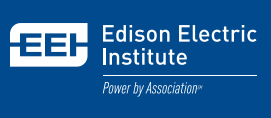 Cross posted from Scaling Green, in part because this analysis VERY much applies to Dominion Virginia Power. Check it out and gain a better understanding of why Dominion has resisted energy efficiency measures, net metering, decoupling, mandatory renewable portfolio standards, etc.
Cross posted from Scaling Green, in part because this analysis VERY much applies to Dominion Virginia Power. Check it out and gain a better understanding of why Dominion has resisted energy efficiency measures, net metering, decoupling, mandatory renewable portfolio standards, etc.
As usual, David Roberts of Grist is on top of important developments in the energy industry that the traditional media has mostly ignored. In this case, it’s a new study by the Edison Electric Institute – the industry group which represent 70% of the U.S. electric power industry – titled “Disruptive Challenges: Financial Implications and Strategic Responses to a Changing Retail Electric Business.” If that sounds dry, how about we go with David Roberts’ more exciting headline: “Solar panels could destroy U.S. utilities, according to U.S. utilities.” And no, this is not – as Roberts explains – “wild-eyed hippie talk,” but “the assessment of the utilities themselves.” And, Roberts adds: “It is one of the most prescient and brutally frank things I’ve ever read about the power sector. It is a rare thing to hear an industry tell the tale of its own incipient obsolescence.”
Roberts’ article got my curiosity going, so I read the study myself. My conclusion? Roberts is absolutely correct that this is an important study, one that provides a window into the utility industry’s thinking about distributed, renewable energy and its implications for the utilities’ traditional business model. Robert is also correct in his other findings. We’ll get to those in a minute. First, thought, here’s the lead paragraph of the EEI report’s Executive Summary, which provides a concise summary of the report’s main findings (bolding added by me for emphasis):
Recent technological and economic changes are expected to challenge and transform the electric utility industry. These changes (or “disruptive challenges”) arise due to a convergence of factors, including: falling costs of distributed generation and other distributed energy resources (DER); an enhanced focus on development of new DER technologies; increasing customer, regulatory, and political interest in demand-side management technologies (DSM); government programs to incentivize selected technologies; the declining price of natural gas; slowing economic growth trends; and rising electricity prices in certain areas of the country. Taken together, these factors are potential “game changers” to the U.S. electric utility industry, and are likely to dramatically impact customers, employees, investors, and the availability of capital to fund future investment. The timing of such transformative changes is unclear, but with the potential for technological innovation (e.g., solar photovoltaic or PV) becoming economically viable due to this confluence of forces, the industry and its stakeholders must proactively assess the impacts and alternatives available to address disruptive challenges in a timely manner.
If that’s not dramatic enough, David Roberts elaborates on a few key points from EEI’s report that are well worth highlighting.
1. Under the current model for the utility sector, one that’s been around for decades, “it is in a utility’s financial interest to generate (or buy) and deliver as much power as possible.” The problem for utilities is this: “Now, into this cozy business model enters cheap distributed solar PV, which eats away at it like acid.”
2. Not only is distributed solar power “not utility-owned or utility-purchased,” it also peaks at mid-day, the time of highest demand (“peak load”) and the most expensive power prices. So, Roberts explains, “when solar panels provide peak power, they aren’t just reducing demand, they’re reducing demand for the utilities’ most valuable product.”
3. The EEI study demolishes the widespread myth that customers will always need grid-delivered power, because solar is “intermittent,” etc. Instead, the report finds, this is highly likely not to be the case for much longer: “While we would expect customers to remain on the grid until a fully viable and economic distributed non-variable resource is available, one can imagine a day when battery storage technology or micro turbines could allow customers to be electric grid independent.”
4. The problem for the industry is that this destroys their business model; for instance, the cost of investments “must now be spread over a smaller group of ratepayers,” meaning “higher rates for those who haven’t switched to solar.” This leads, in Roberts’ words, to a “vicious, self-reinforcing cycle,” in which “it raises costs on other ratepayers and hurts the utility’s credit rating,” and as more customers switch to solar because of the improved economics, “costs on remaining ratepayers are even further increased, the utility’s credit even further damaged.”
5. This “vicious, self-reinforcing cycle” is not theoretical. In fact, it’s happened to several other large industries telecommunications, airlines, mail delivery, film, etc. And, the EEI study worries, it could very well happen to the utilities as well.
What next? It appears inevitable that the economics of distributed renewable energy (mostly solar power at this point), as well as of energy efficiency enhancements, will continue to improve in coming years. This means that the traditional utilities’ business model will have to adapt, or quite possibly die. The question is, which path will utilities choose: a) resist the changes to their dying breath, thus slowing (but not stopping) the adoption of distributed renewable energy? b) try to manage the changes, harness the forces at work, and potentially benefit from them? c) ignore the rising tide of distributed renewable energy until it’s too late? This is something we’ll be watching closely in the months and years to come.


 Sign up for the Blue Virginia weekly newsletter
Sign up for the Blue Virginia weekly newsletter








